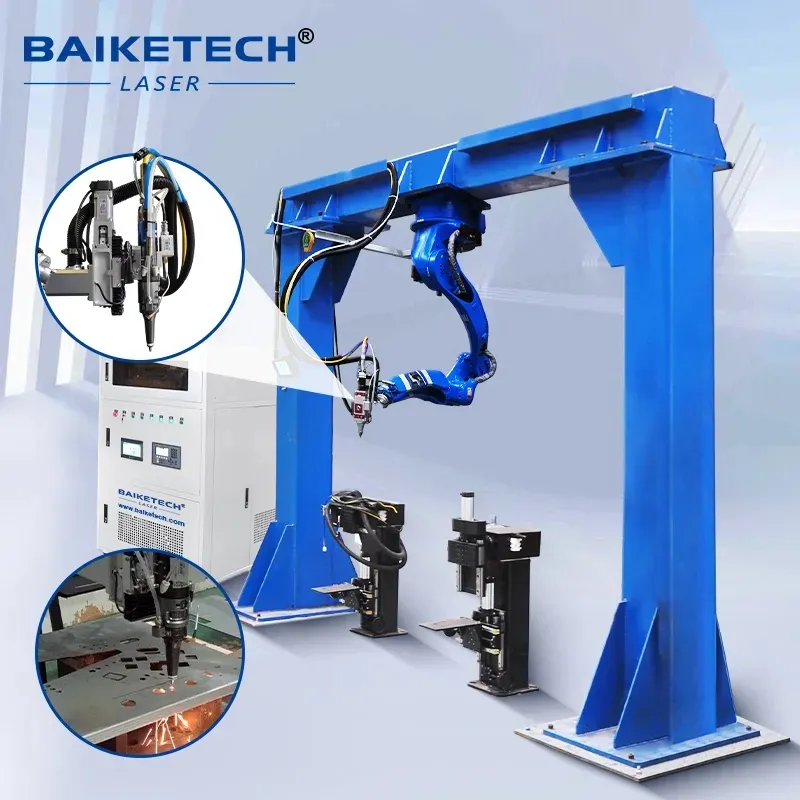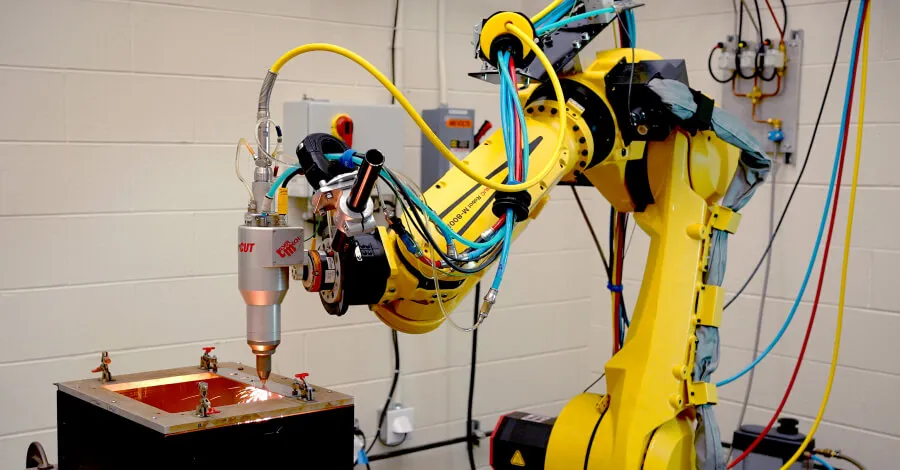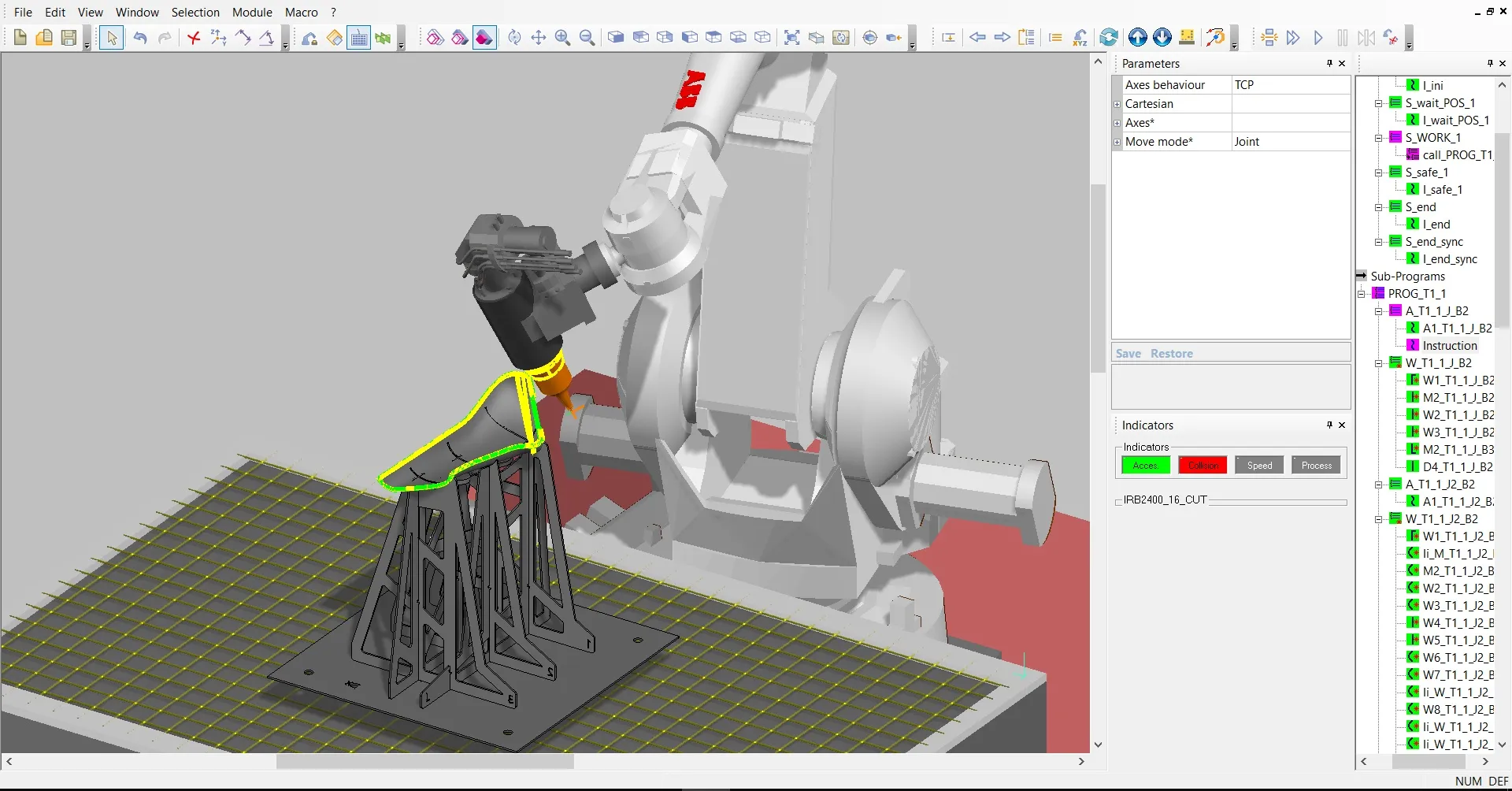
Laser Cutter Robot Arm: Revolutionizing Precision Manufacturing
The integration of laser cutting technology with robotic arms represents one of the most significant advancements in modern manufacturing and industrial automation. This powerful combination has revolutionized how industries approach material processing, offering unprecedented levels of precision, efficiency, and flexibility. Laser cutter robot arms are transforming everything from automotive manufacturing to aerospace engineering, providing solutions that were once considered impossible.
Understanding Laser Cutter Robot Arm Technology
A laser cutter robot arm is essentially a robotic manipulator equipped with a high-powered laser cutting head. This sophisticated system combines the precision of laser technology with the flexibility and reach of robotic arms, creating a versatile tool capable of handling complex cutting tasks across various materials and geometries.

The core components of a laser cutter robot arm system include:
- Robotic manipulator (typically 6-axis for maximum flexibility)
- High-power laser source (CO2, fiber, or diode lasers)
- Laser cutting head with focusing optics
- CNC controller and programming interface
- Safety enclosures and ventilation systems
- Material handling and positioning systems
Types of Lasers Used in Robotic Cutting Systems
Different laser types serve specific applications in robotic cutting systems. The choice of laser depends on the material being processed, required cutting speed, and precision requirements.
| Laser Type | Wavelength | Power Range | Primary Applications | Advantages |
|---|---|---|---|---|
| Fiber Laser | 1,064 nm | 500W - 20,000W | Metal cutting, marking, welding | High efficiency, low maintenance, excellent beam quality |
| CO2 Laser | 10,600 nm | 1,000W - 8,000W | Non-metal materials, plastics, wood | Good for non-metals, established technology |
| Diode Laser | 808-980 nm | 50W - 6,000W | Brazing, soldering, heat treatment | Compact size, high electrical efficiency |
Key Advantages of Laser Cutter Robot Arms
Unmatched Precision and Accuracy
Laser cutter robot arms offer exceptional precision, with positioning accuracy often reaching ±0.1 mm or better. This level of accuracy is crucial for applications requiring tight tolerances, such as aerospace components or medical device manufacturing. The combination of robotic precision and laser focus creates cutting capabilities that traditional methods cannot match.

Enhanced Flexibility and Reach
Unlike traditional gantry-style laser cutters, robotic arms provide unparalleled flexibility with their multi-axis movement capabilities. A standard 6-axis robot can access complex geometries and hard-to-reach areas that would be impossible for conventional cutting systems. This flexibility allows manufacturers to process complex 3D parts without repositioning or multiple setups.
Reduced Setup Time and Increased Efficiency
Robotic laser cutting systems significantly reduce setup times compared to traditional methods. With advanced programming and simulation software, manufacturers can quickly program complex cutting paths and optimize production processes. This efficiency translates to faster production cycles and reduced manufacturing costs.
Applications Across Industries
Automotive Manufacturing
The automotive industry has been one of the earliest adopters of laser cutter robot arm technology. These systems are used for cutting body panels, creating ventilation holes, trimming excess material, and processing various automotive components. The precision and speed of robotic laser cutting have contributed significantly to improved vehicle quality and manufacturing efficiency.

Aerospace and Defense
In the aerospace sector, laser cutter robot arms are essential for processing high-strength materials like titanium alloys and composites. These systems create precise components for aircraft structures, engine parts, and defense equipment. The ability to maintain material integrity while achieving complex geometries makes robotic laser cutting invaluable in this demanding industry.
Architecture and Construction
Architectural metalwork and construction components benefit greatly from robotic laser cutting. The technology enables the creation of intricate designs in structural steel, decorative elements, and custom building components. The precision of laser cutting ensures perfect fit and finish in architectural applications.
| Industry | Primary Applications | Materials Processed | Key Benefits |
|---|---|---|---|
| Automotive | Body panels, structural components, trim parts | Steel, aluminum, composites | High speed, precision cutting, reduced tooling costs |
| Aerospace | Engine components, structural elements, custom parts | Titanium, aluminum alloys, composites | Material integrity, complex geometries, tight tolerances |
| Medical Devices | Surgical instruments, implants, device components | Stainless steel, titanium, plastics | Sterile cutting, micron-level precision, clean edges |
| Consumer Electronics | Housing components, precision cutouts, internal parts | Plastics, aluminum, specialty alloys | Burr-free edges, high detail, minimal heat affect zone |
Programming and Control Systems
Modern laser cutter robot arms are controlled by sophisticated programming systems that allow for precise path planning and optimization. These systems typically include:
- Offline programming software for simulation and path optimization
- Real-time monitoring and adjustment capabilities
- Integration with CAD/CAM systems for seamless workflow
- Collision detection and avoidance systems
- Quality control and inspection integration

Safety Considerations and Regulations
Operating laser cutter robot arms requires strict adherence to safety protocols. Key safety measures include:
- Laser-safe enclosures with interlock systems
- Proper ventilation and fume extraction
- Laser safety training for operators
- Regular maintenance and safety inspections
- Emergency stop systems and safety sensors
Future Trends and Developments
Integration with Industry 4.0 and IoT
The future of laser cutter robot arms lies in their integration with Industry 4.0 technologies. Smart factories are incorporating these systems with IoT sensors, artificial intelligence, and cloud computing to create fully automated, self-optimizing manufacturing cells. This integration enables predictive maintenance, real-time optimization, and remote monitoring capabilities.
Advances in Laser Technology
Ongoing developments in laser technology continue to enhance the capabilities of robotic cutting systems. Ultrafast lasers, improved beam quality, and higher power densities are enabling new applications and improving processing speeds. These advances are making robotic laser cutting more accessible and cost-effective for smaller manufacturers.

Artificial Intelligence and Machine Learning
AI and machine learning algorithms are being integrated into laser cutter robot arm systems to optimize cutting parameters, predict maintenance needs, and improve quality control. These intelligent systems can adapt to material variations and optimize cutting paths in real-time, further enhancing efficiency and quality.
Economic Considerations and ROI
While the initial investment in laser cutter robot arm systems can be substantial, the return on investment is typically achieved within 1-3 years through:
- Reduced labor costs
- Increased production speed
- Minimized material waste
- Reduced secondary operations
- Improved product quality and consistency
| Cost Factor | Traditional Cutting | Robotic Laser Cutting | Savings/Improvement |
|---|---|---|---|
| Setup Time | 2-4 hours | 15-30 minutes | 75-85% reduction |
| Material Waste | 15-25% | 5-10% | 50-70% reduction |
| Production Speed | Standard | 2-3x faster | 100-200% increase |
| Labor Requirements | Multiple operators | 1 operator multiple systems | 60-80% reduction |
Conclusion
Laser cutter robot arms represent a transformative technology that continues to push the boundaries of what's possible in manufacturing and material processing. As the technology evolves and becomes more accessible, we can expect to see even broader adoption across industries and the development of new applications that we can only begin to imagine today. The combination of robotic flexibility, laser precision, and intelligent control systems creates a powerful tool that will continue to shape the future of manufacturing for years to come.

